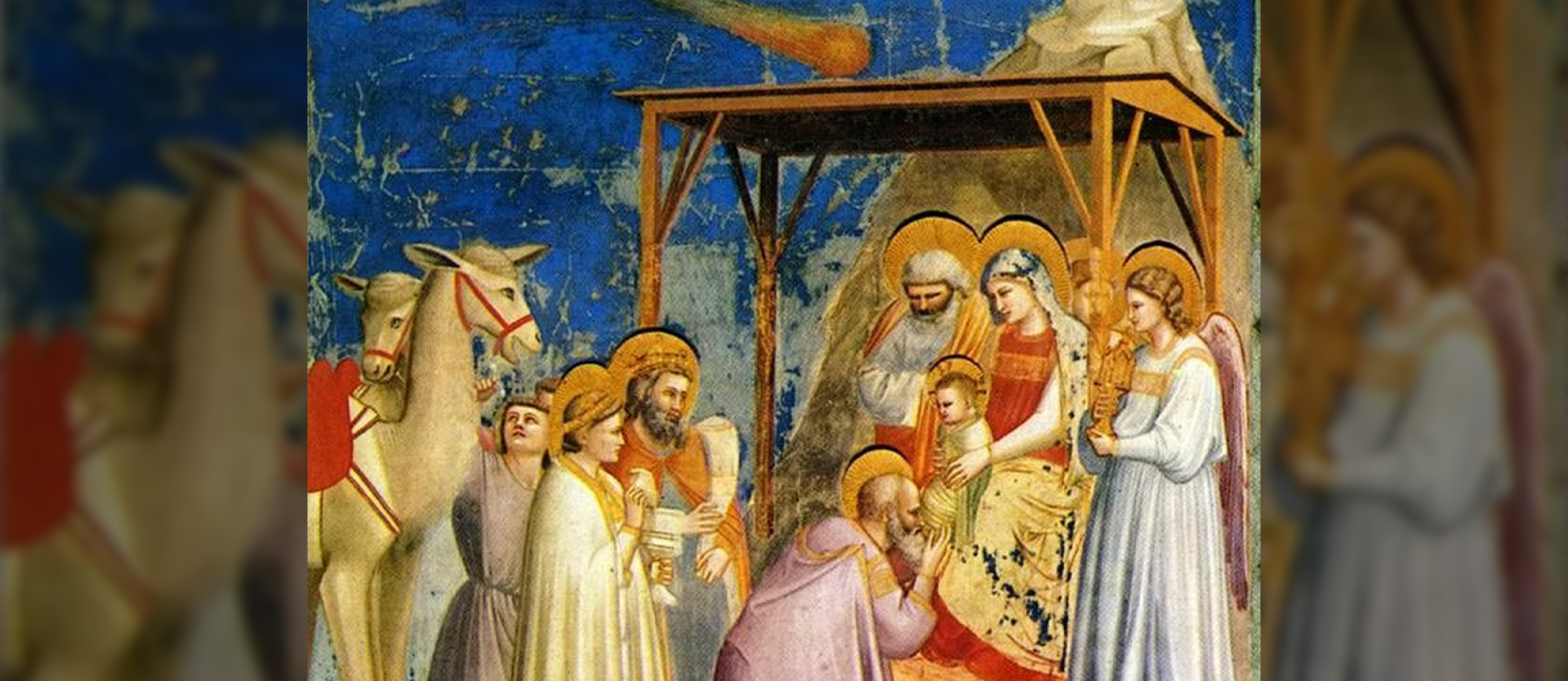
The Star of Bethlehem

"When Jesus was born in Bethlehem of Judea in the days of Herod the king, behold, wise men came from the east to Jerusalem, saying: Where is the newborn King of the Jews? We have seen his star rising and have come to worship him," according to the Gospel of Matthew (Mt. 2:1-2). And further, that the heavenly body passed before them on their journey until they arrived at the place of destiny.
In order to interpret this celestial event accordingly and thus to bring out its plausibility and the truth content of the narration, scholars and theologians were already endeavored since the early Christianity. One of them was Origenes, who reported already in the third century that it must have been a comet. His insight still has a lasting influence on our idea of a star with a tail, as shown in numerous pictures, Christmas illustrations and decorations. However, both for the core of the statement of the tradition, as well as for its establishment in reality, difficulties arise. On the one hand a comet was considered in the antiquity as symbolic "mischief bringer", which cannot be brought together again so at all with the salvation history. On the other hand, no other contemporary source except the Bible mentions such a conspicuous celestial event, which is supposed to have happened around the birth of Christ. Possible in this connection would be at most the Halley's comet to call, which would have been seen however according to computations around the year 12 B.C. in the sky, whereas one dates Christ's birth in the comparison with other sources today around the years 7 to 4 B.C.. Thus, the Magi would have had a very long journey, which they would have started years before the actual birth of the child.
But there are still further variants to assign the Christmas star to real events in the sky. According to this, two planets should have come so close to each other in the sky around the time of Christ's birth that they may have been taken for a star that outshines everything. This theory from the late Middle Ages was taken up in the beginning of the 17th century by the famous astronomer Johannes Kepler and he tried to confirm it. He himself observed a new and peculiar source of light in the evening sky around the year 1604. It was a conjunction, i.e. a gathering of Mercury, Jupiter and Saturn in the sky. According to Kepler's subsequent calculations, there should have been a similarly close constellation of Jupiter and Saturn in the constellation of Pisces also around the 7th BC. Later, Kepler also witnessed a supernova that outshone everything in the night sky. He assumed that this had also been the case around the birth of Christ and inevitably linked the events of a planetary conjunction with the occurrence of a supernova, which from today's point of view, however, has nothing to do with each other. Kepler's theory was nevertheless considered for a long time as the most likely one. Not least also because of its symbolic force. Thus Jupiter was considered since ever as the "king planet" and Saturn was symbolically connected with the people of Israel, like also the constellation Pisces with the country Judea had a metaphorical relationship. This gives the Christmas story additional symbolic character and one would like to think that the wise men from the Orient understood and interpreted this accordingly. However, even here one doubts whether such interpretations were evident to the guests from afar. Besides, there is no indication in the preserved Babylonian cuneiform tablets that the rare star conjunction assumed by Kepler would have represented an extraordinary and remarkable event for the local people.
Today's calculations have also shown that Jupiter and Saturn did not come so close to each other at that time that they could have been taken for only one brightly shining star. And in the Bible explicitly only one star is mentioned. But also another star conjunction may be considered. So astronomers think that between the years 3 and 2 before Christ Venus and Jupiter were so nearby in the sky that they might have been perceived as only one bright celestial body. However, this again does not fit chronologically so well to the assumed date of birth of the Savior.
And so one stands at the end again at the beginning, because all well-meant explanation attempts do not result in a really uniform and correct picture. In the end one may take the star of Bethlehem as it was described in the gospel, as a shining symbol for the coming of Christ. A derivation for this can also be found in the tradition. For already in the Old Testament, in the fourth book of Moses, there is a prophecy that seems to be fulfilled with Christ's birth: "There shall arise a star out of Jacob, and a scepter out of Israel." In this spirit, the Photonworld editorial team wishes you all happy Christmas and a successful start to the new year!









